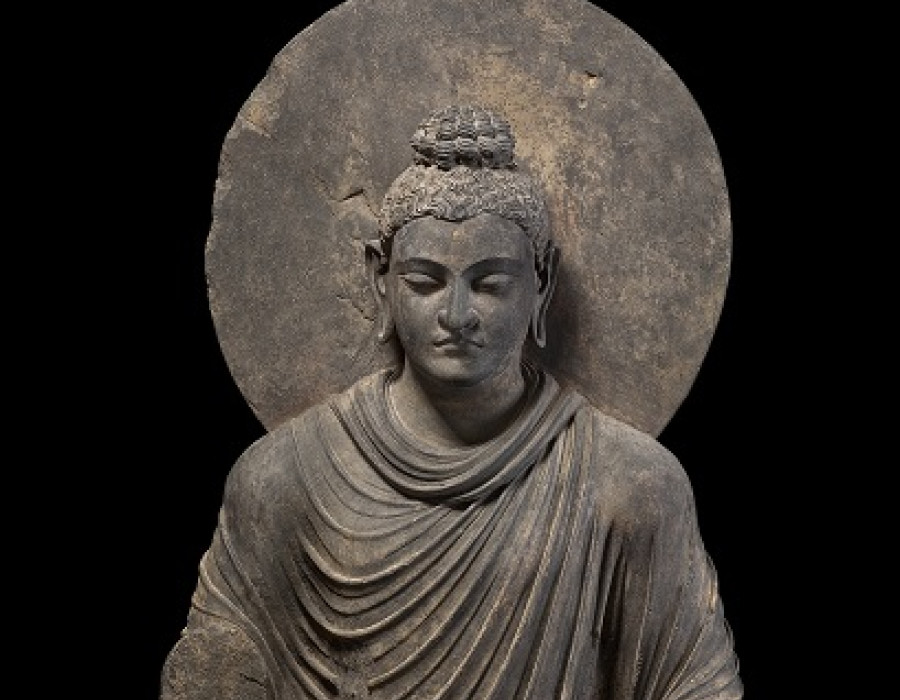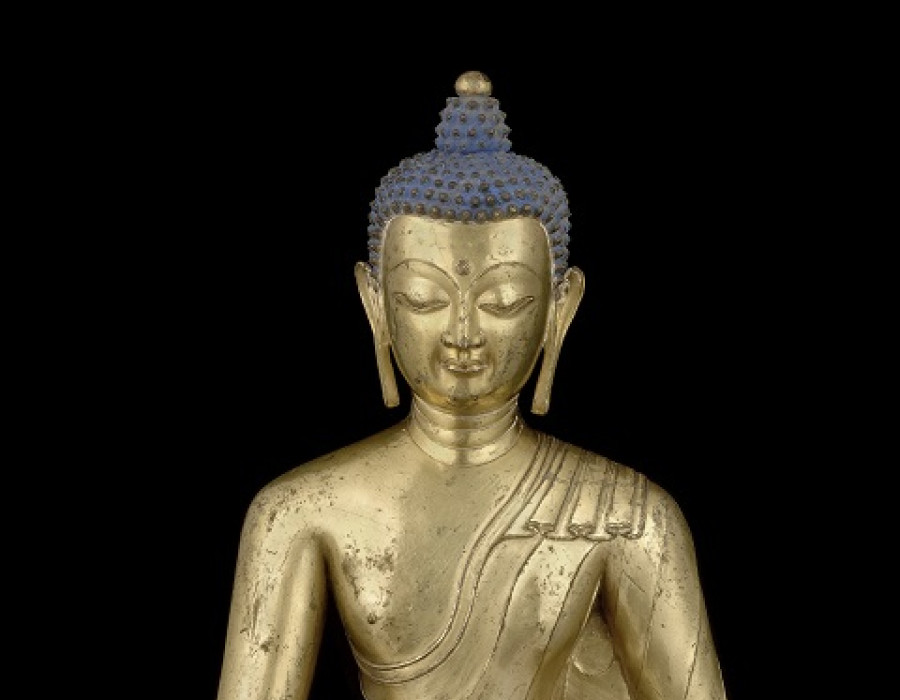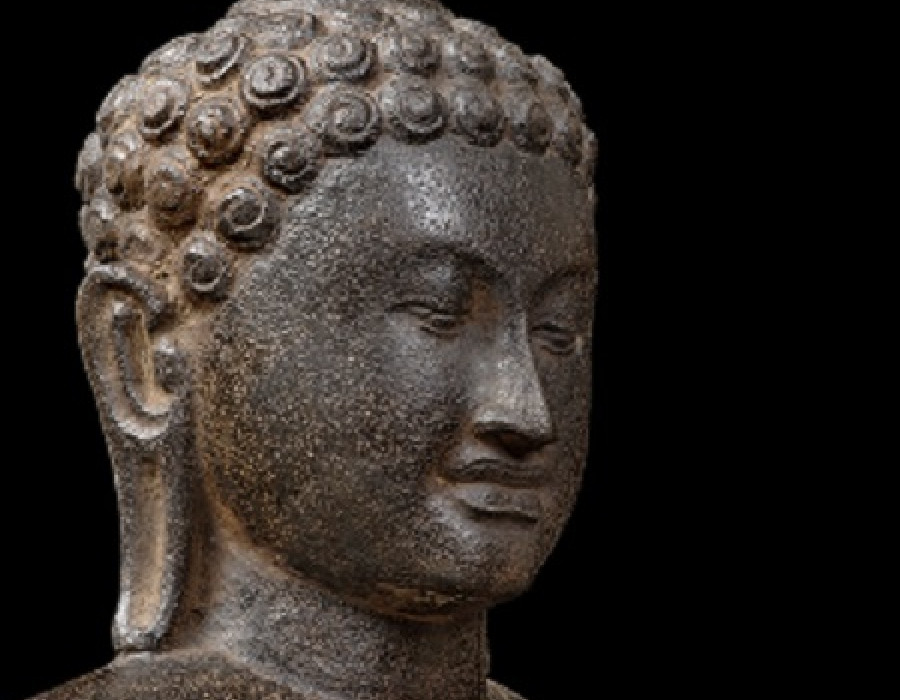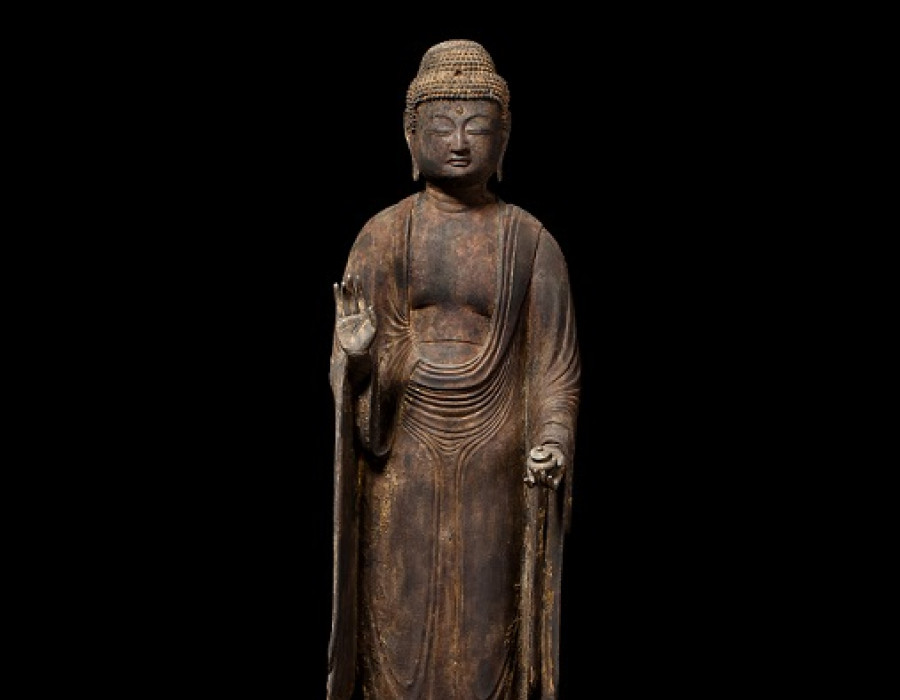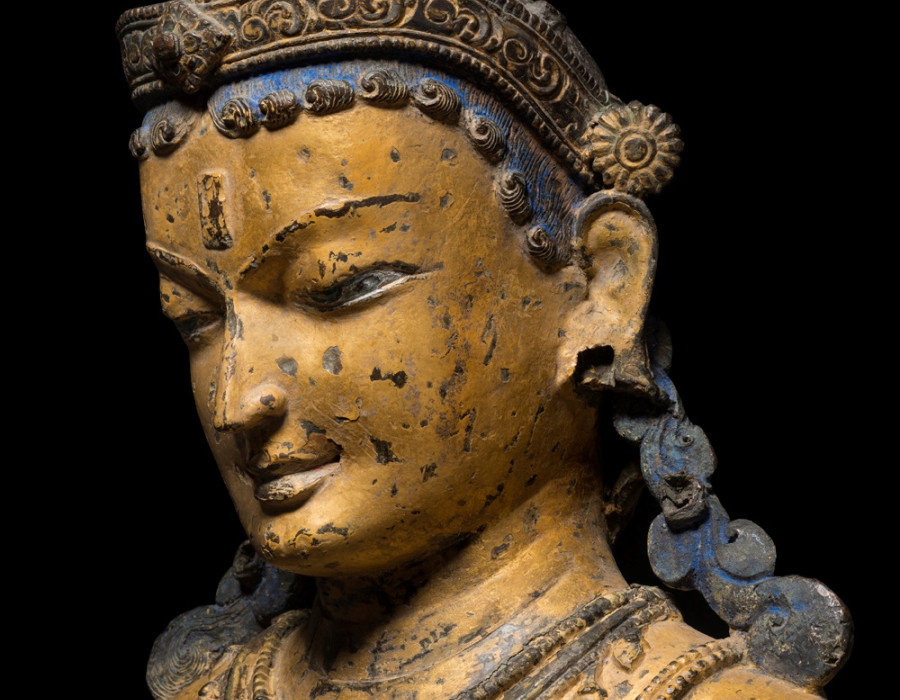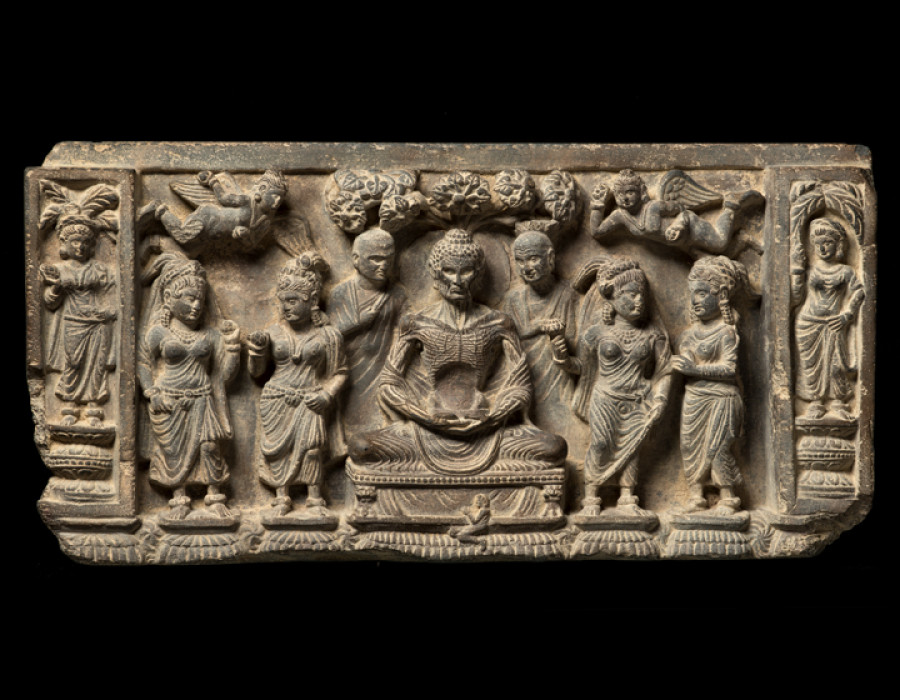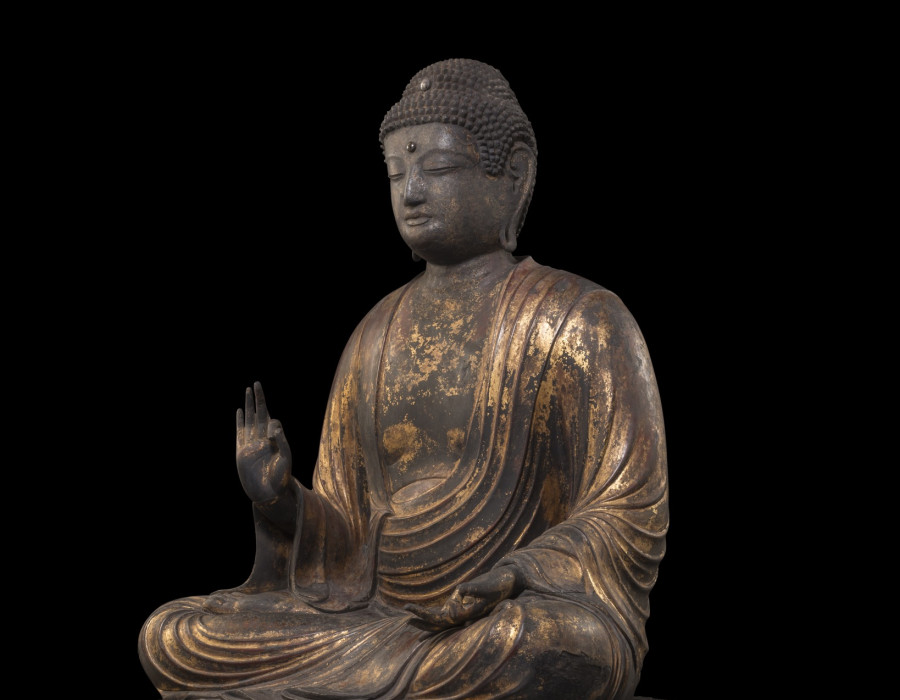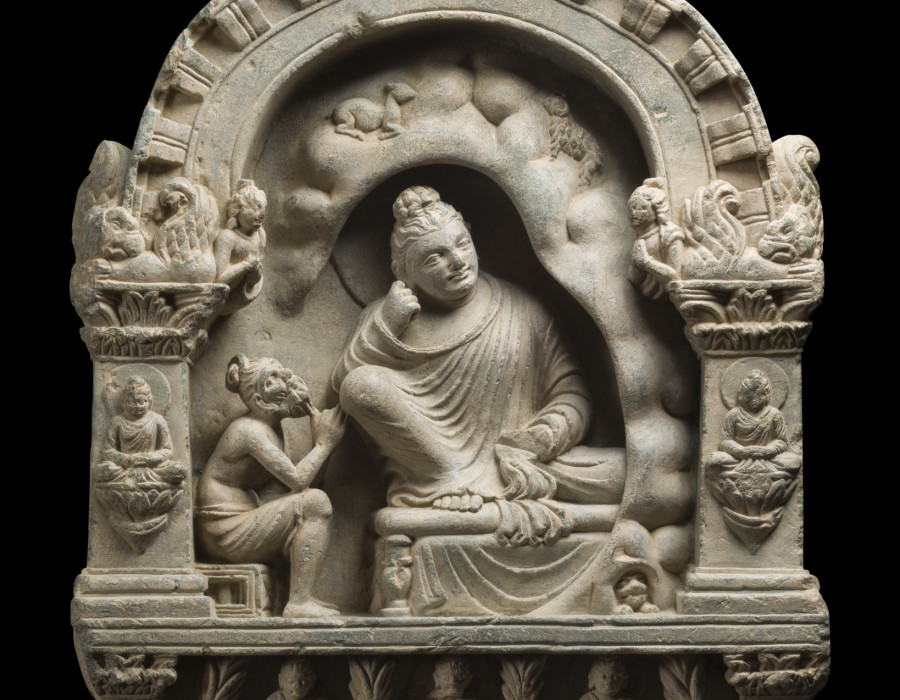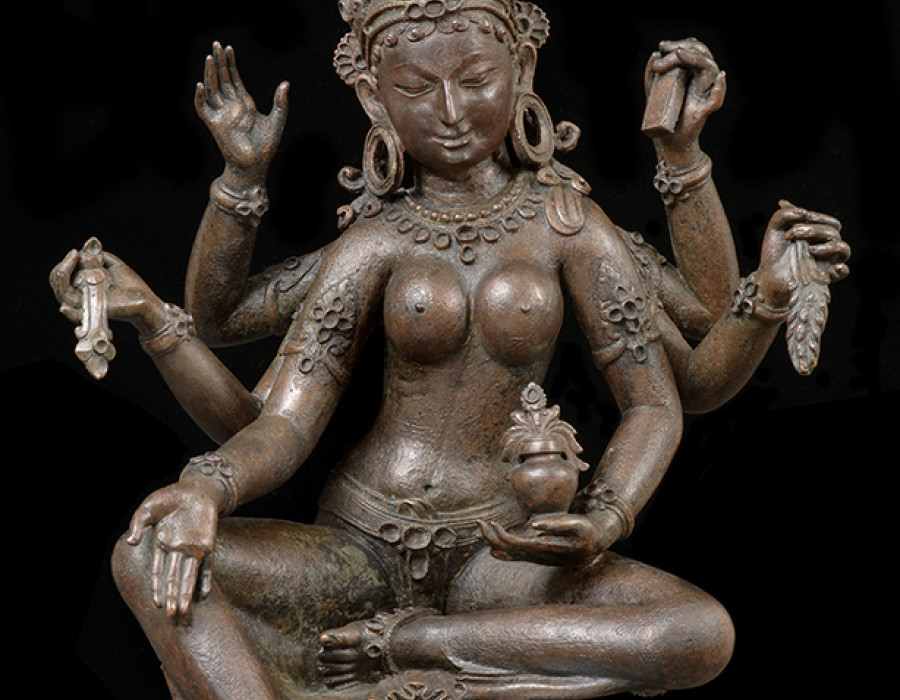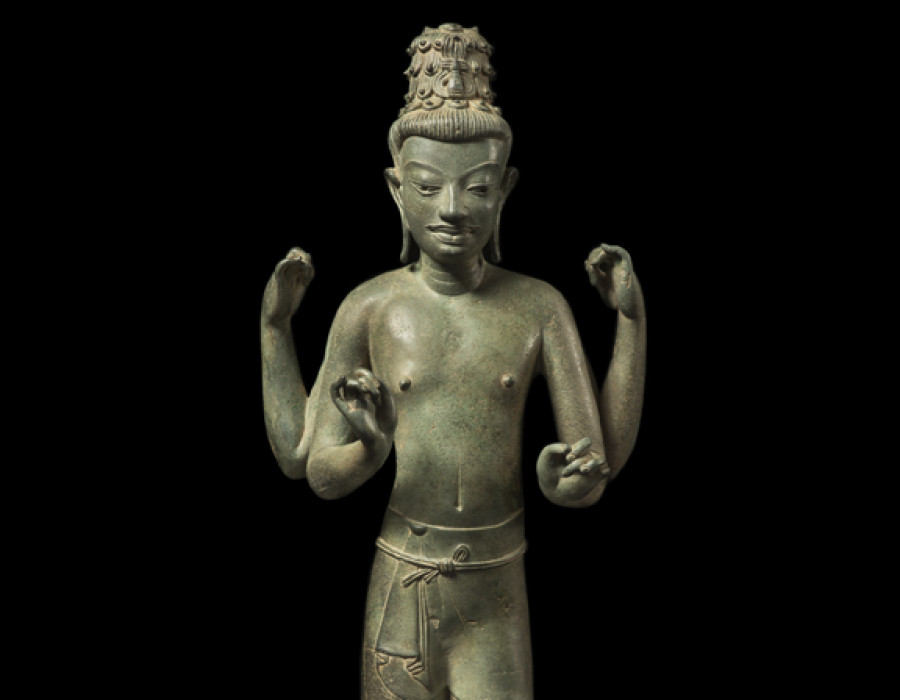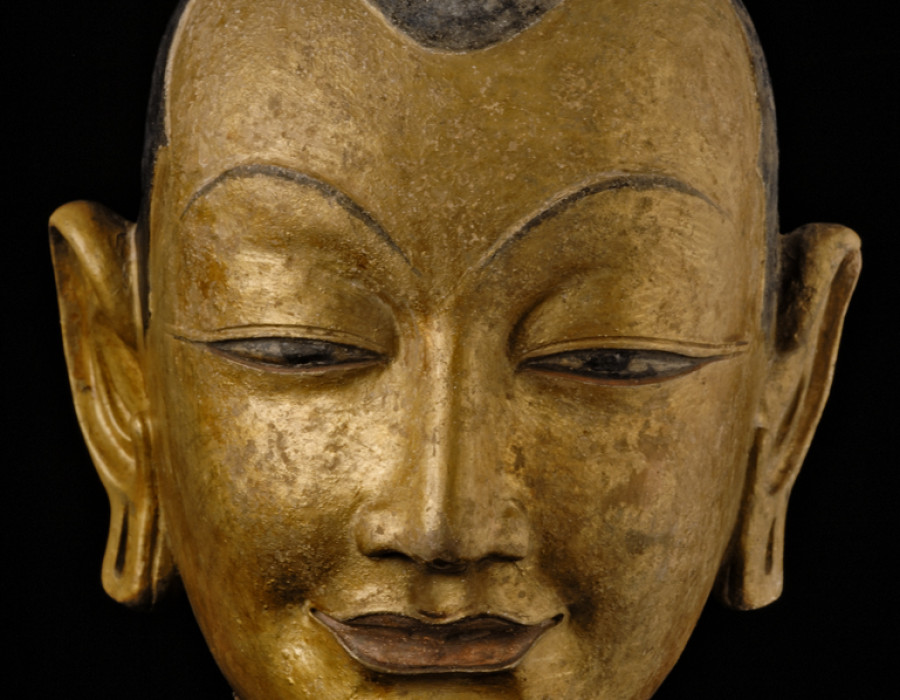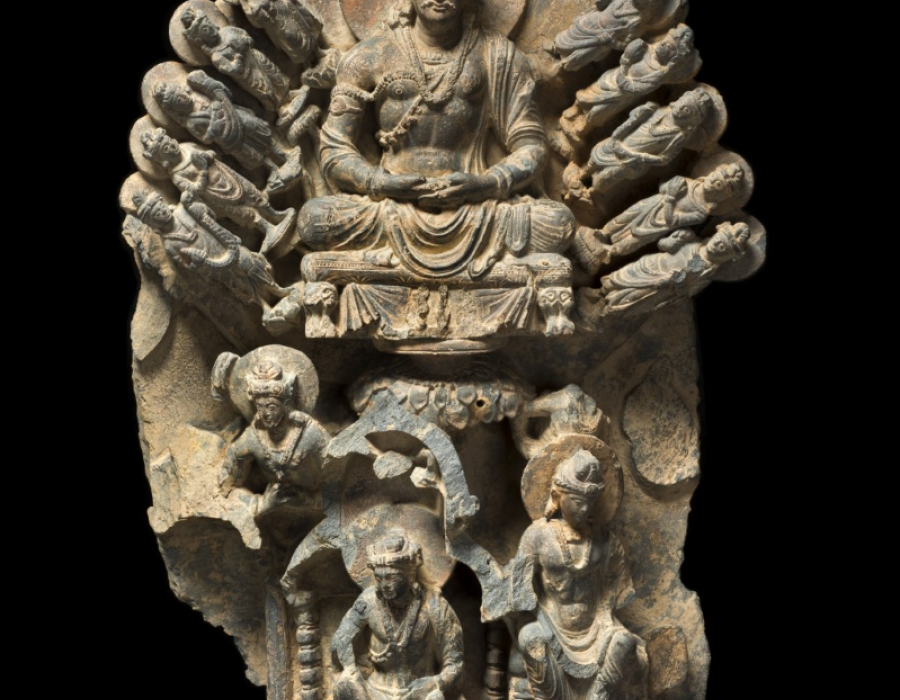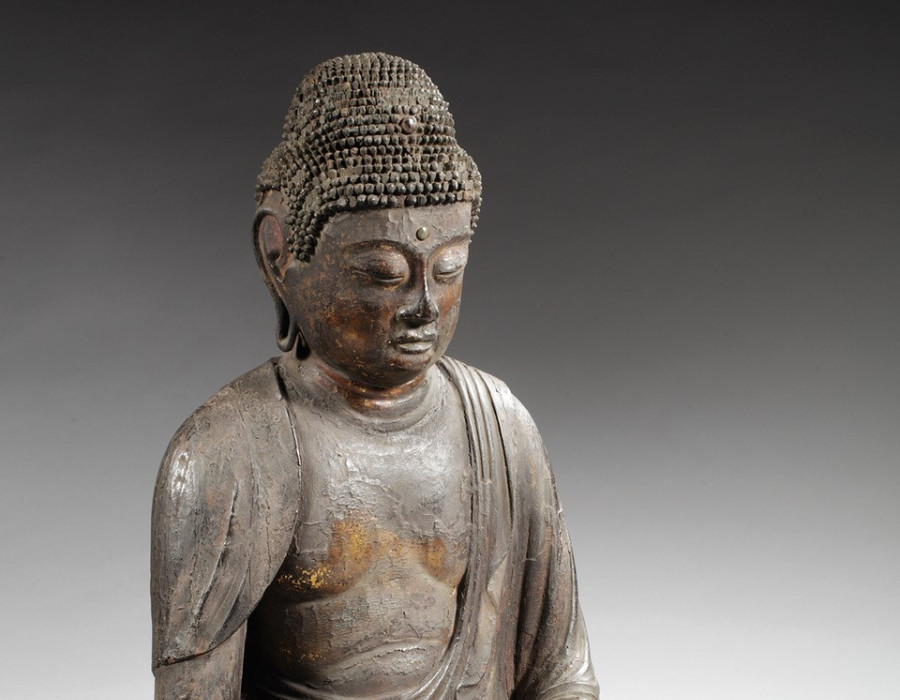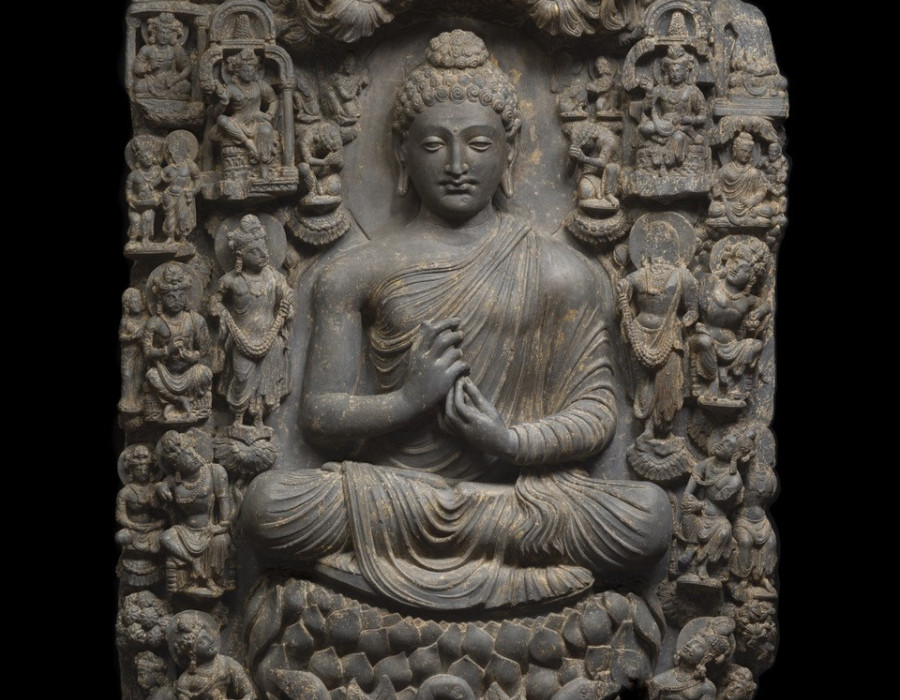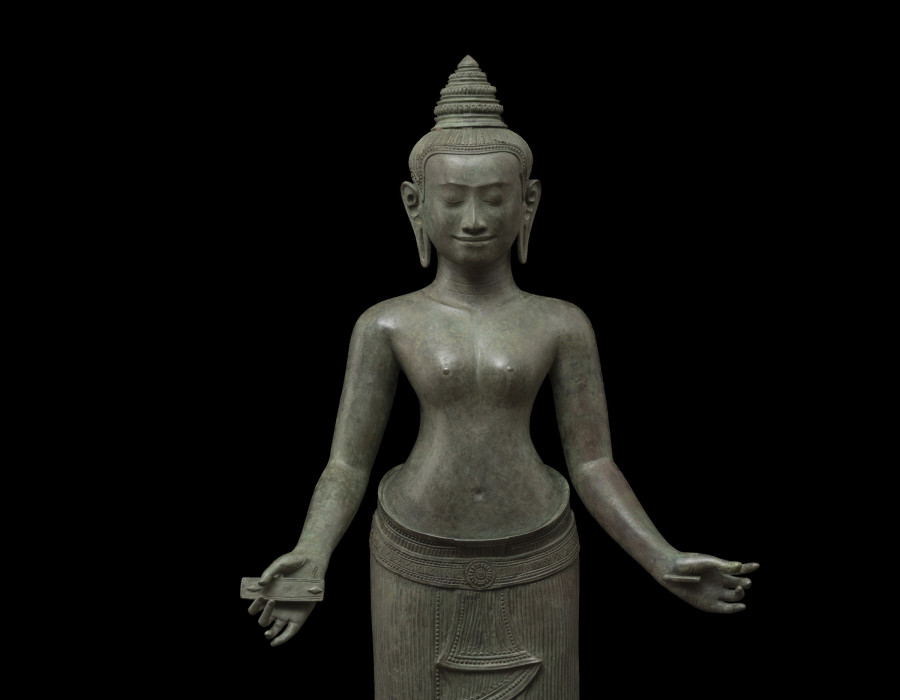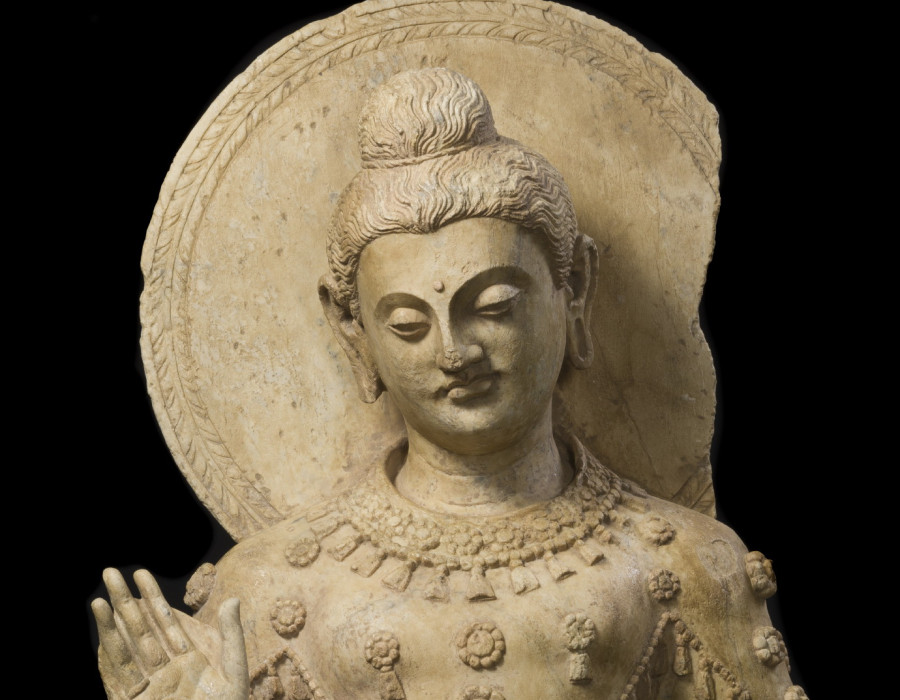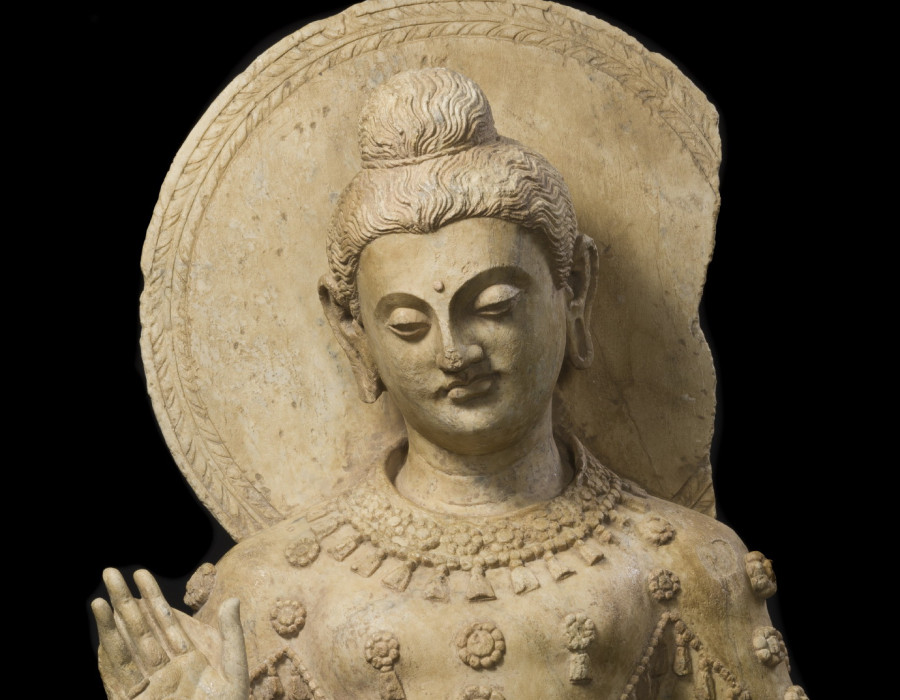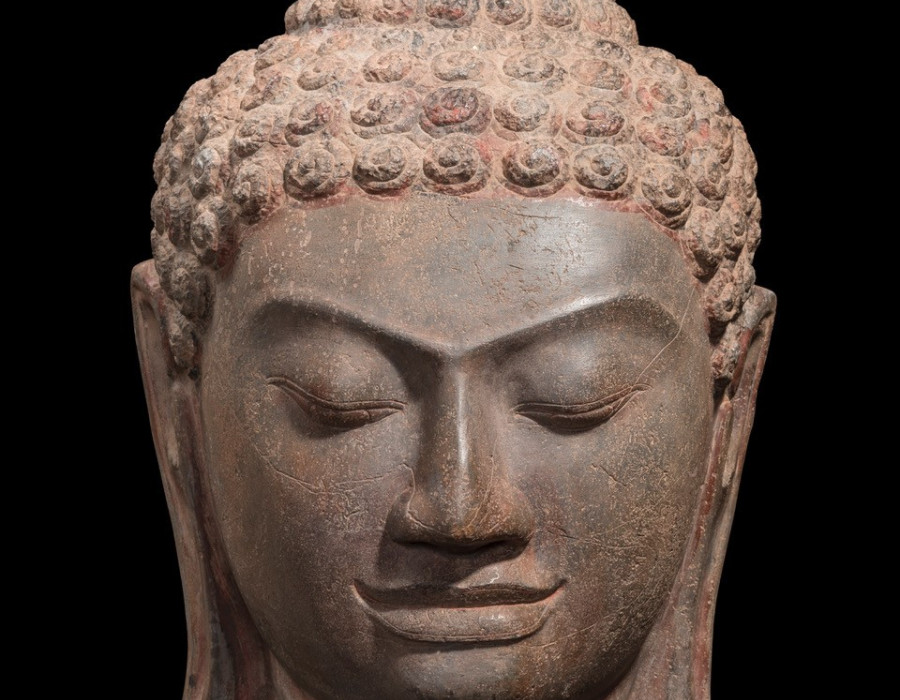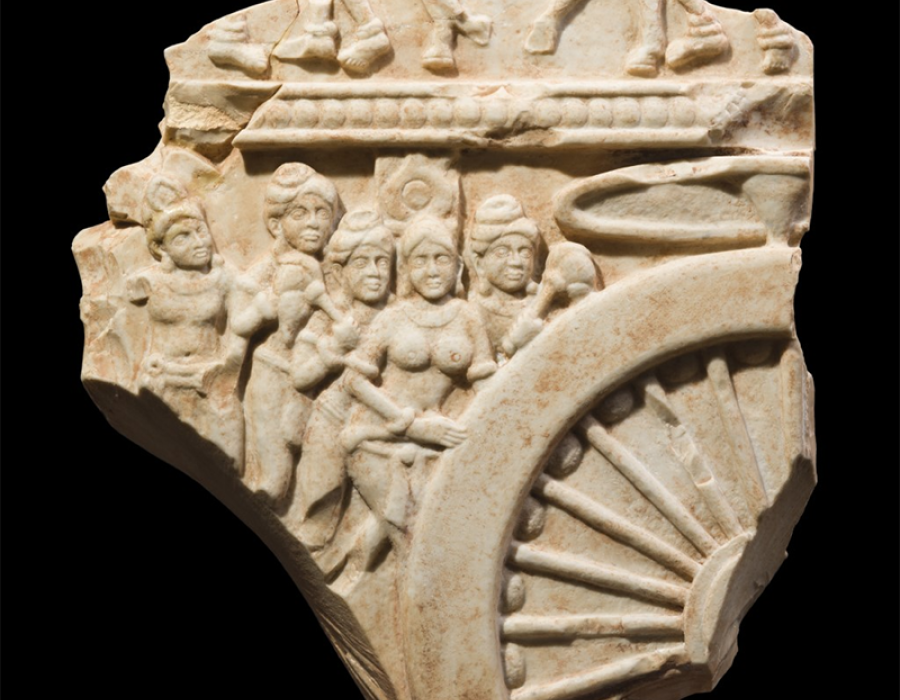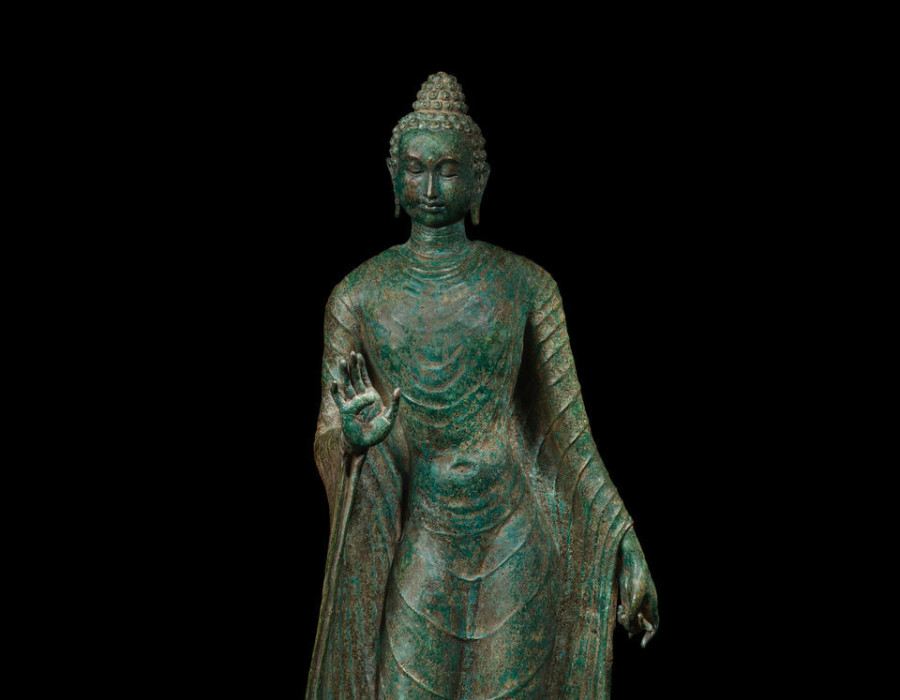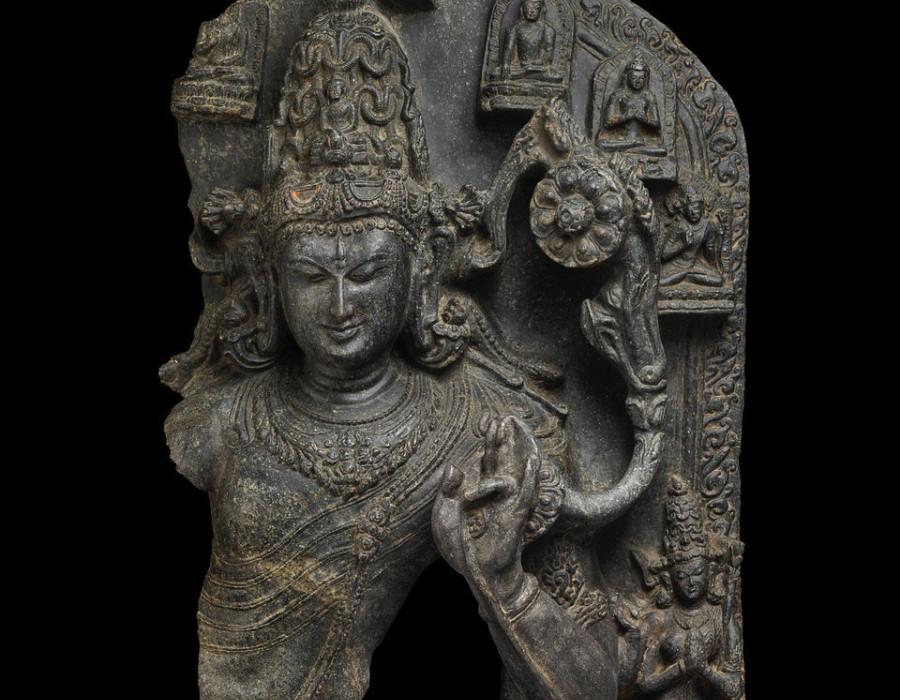
Martin Goodson
Images of Truth: Bodhisattva - Central Tibet
13th/early 14th century
Tibet became a refuge for Tantric teachings once persecution took hold in India. Bodhisattvas came to represent the function of the Buddha nature in the world and devotional images began to be formed in this Himalayan kingdom.
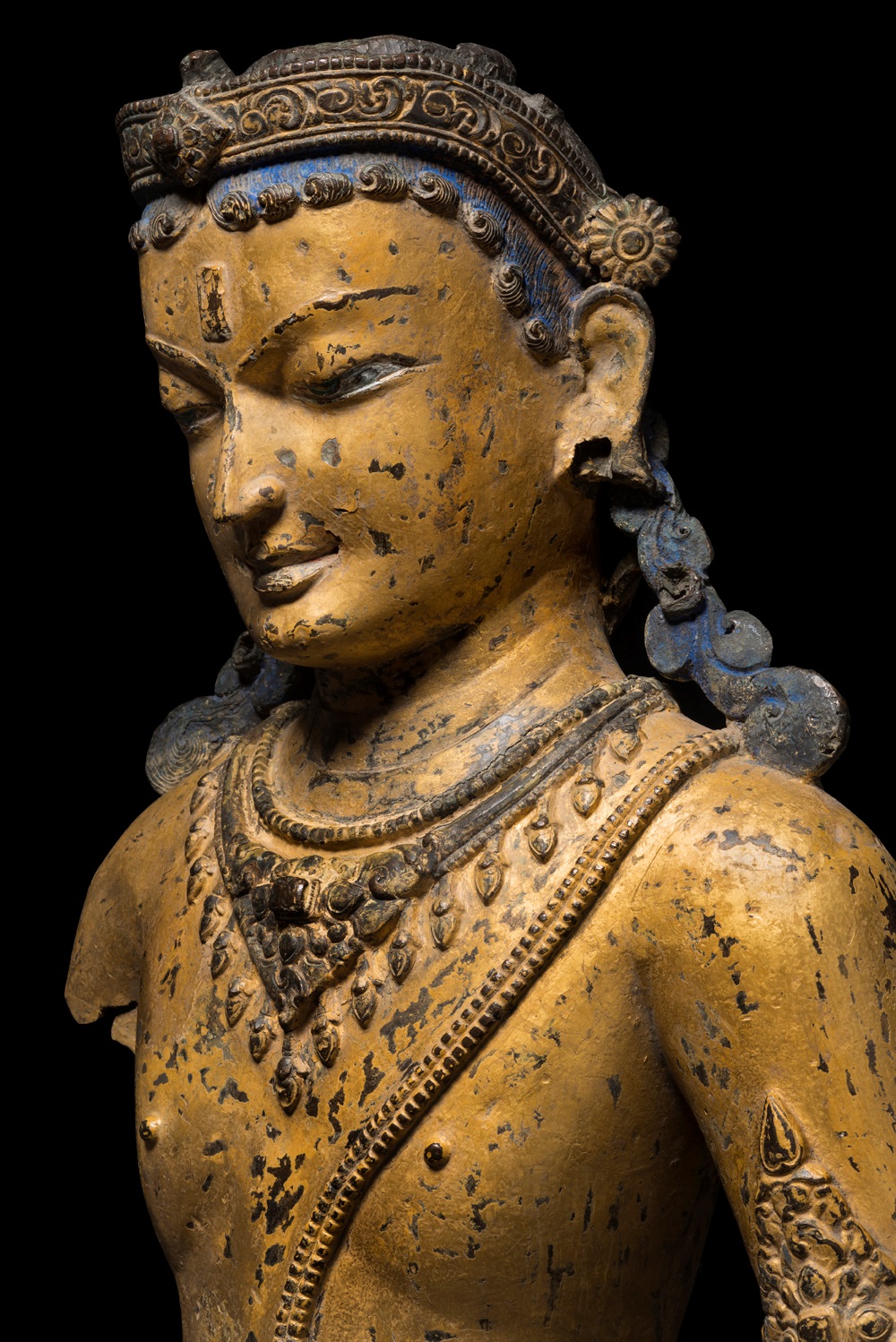
Bodhisattva bust
Bronze with polychrome and cold gold paint
Height 55cm
This elegant section of a large statue presents a remarkable insight into the early work of native Tibetan sculptors. Initially taught their craft by Newar (Nepalese) masters, within a few generations the Tibetans became adept at creating images that reflected their own sacred ideas and aesthetic vision. This beautiful bodhisattva dates from the period when Tantric Buddhism was being annihilated in India; Tibetan theologians realised that it depended on them to keep the faith alive and this filled them and the artists working for them a new confidence to craft the finest temple statues, rather than to rely on imported images.
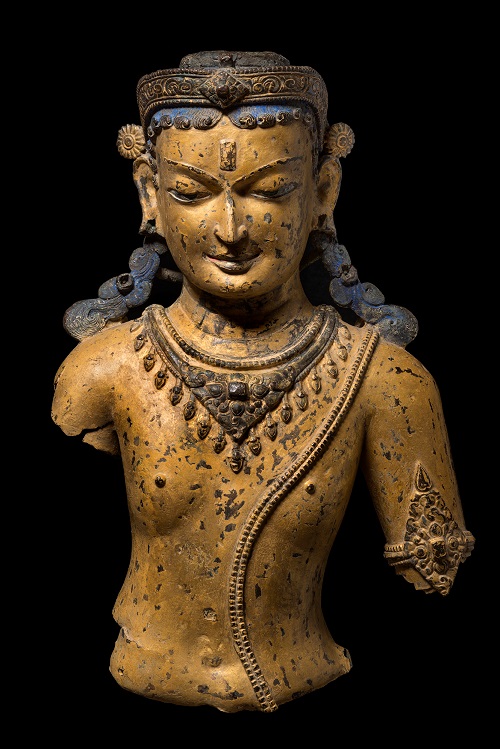
Bodhisattva bust
Once the Great Bodhisattva called Manjushri was born during what is called the Kali Yuga. This is a time at the end of an Aeon when the teachings of the Buddha have vanished from the face of the earth as prophesied by the Buddha himself.
At such a time the beings that live during this era lack the capacity to understand the teachings were they to hear them. In fact they would be very likely to revile them.
Even though all bodhisattvas are dedicated towards the liberation of all beings by teaching the Buddha’s message; Manjushri realised that to attempt to do so would incur disastrous karmic consequences for these hearers as to revile the teachings is a serious error. So instead he decided that the best thing he could do for this incarnation was just to apply his efforts to his own personal practice and bide his time and this is what he did.
Leaving the company of men and women behind he retreated deep into the forest and seated himself under a tree and began his meditation practices.
It is in the nature of humans to be curious and despite his remoteness people noticed this strange one who lived alone and kept silent. Despite the fact that people would ask what he was doing he did not reply for fear that his teaching would trouble them. However they could not help but admire his inner strength and determination. Quite spontaneously they were moved to help him. They brought him food and water, they repaired his wooden hut where he slept they also brought him new robes should his own wear out.
In this way these people began to accrue merit; for to help someone engaged in the religious life is to ensure re-birth at a time when the teachings are available thus providing the possibility of liberation and an end to suffering.
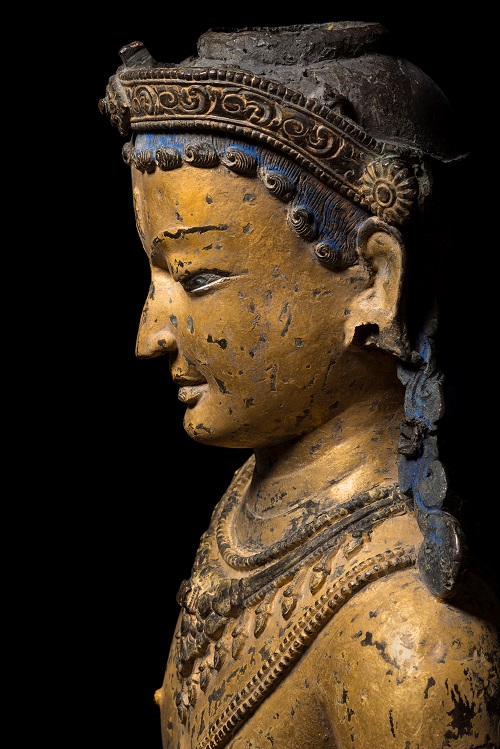
Bodhisattva bust
Images of Truth
Buddhist art and iconography

